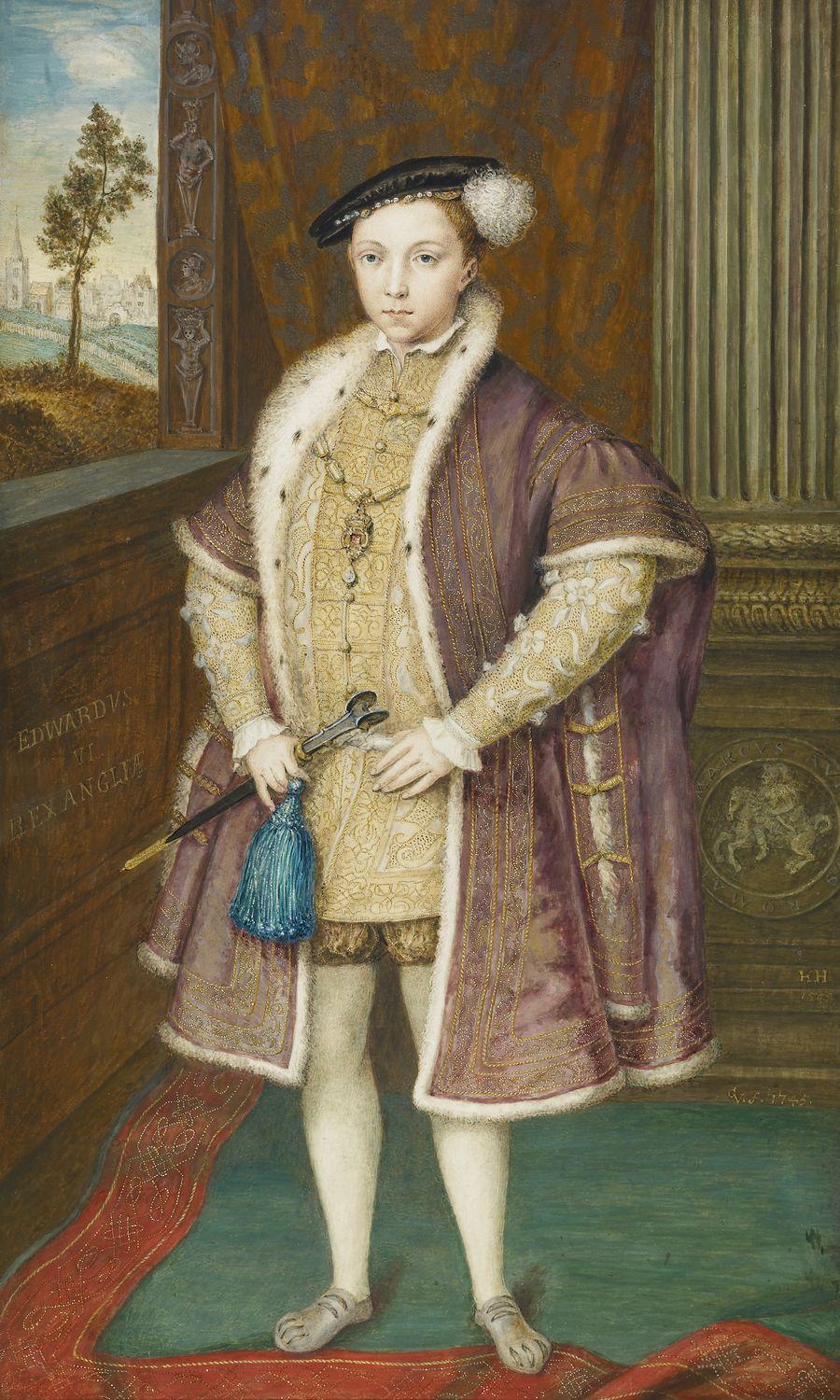
Henry's Legacy

Edward VI (1537-1553) (after attributed to Scrots) ©
This copy of William Scrots’s portrait of Prince Edward was painted in 1745. The original, once thought to be by Holbein, is on display in the State Apartments. It was probably painted in 1546, just before Edward became King. The pose of the nine-year old Prince consciously echoes that of Henry in the Whitehall Mural. Although Edward had been urged to follow his father’s strong example in the inscription on Holbein’s portrait of 1538, his youthful accession meant the country was governed by a series of advisors in his name.
The months and years after Henry’s death in January 1547 saw turmoil in England as the young Edward’s government was dominated by factions who vied for influence. Edward died of tuberculosis only six years after becoming King. He was briefly succeeded by Lady Jane Grey, daughter of Henry Grey (whose Garter Book is on display). Jane Grey was quickly overthrown by Henry VIII’s eldest child, Mary, who had overwhelming popular support. Mary, however, died in 1558 and the throne passed to Henry’s only surviving child, Elizabeth, who ruled for the next forty-five years.
Henry had not managed to leave the secure legacy of succession for which he had hoped, and which commissions such as the Whitehall Mural proclaimed. At Windsor Castle, however, his influence is readily seen. In the Holbein portraits and other treasures in the Royal Collection, in the monumental Henry VIII Gate, and in St George’s Chapel where he worshipped with his Garter Knights and chose to be buried, Henry has left an enduring legacy.
